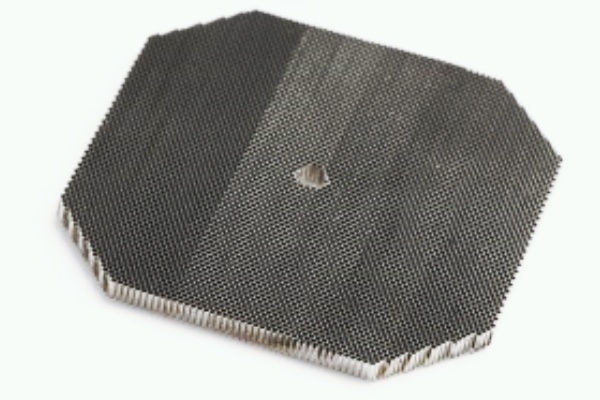To be a valuable global supplier
for metallic honeycombs and turbine parts
Release time:2025-08-19
For decades, thermal failure above 900°C doomed conventional exhaust treatment systems. As industrial processes and high-performance engines pushed temperatures beyond ceramic limits, a new breed of metallic catalyst substrates emerged – engineered to not just survive but thrive in hellish conditions.

Traditional metallic catalyst substrates faced two mortal enemies at extreme temperatures: oxide scale spallation and aluminum depletion. Above 900°C, protective alumina layers would crack and peel off like sunburnt skin. Meanwhile, aluminum atoms diffused outward from the alloy core, leaving behind weakened regions prone to catastrophic collapse. These failure modes rendered standard materials useless in waste incinerators, turbine exhausts, and heavy-duty regeneration cycles – until materials science fought back.
The breakthrough came through strategic doping of iron-chromium-aluminum alloys with rare-earth elements. Adding trace yttrium (0.1-0.3 wt%) fundamentally altered the oxidation game:
Yttrium ions occupy vacancies at the oxide grain boundaries, blocking oxygen’s destructive inward path
Lanthanum creates diffusion barriers that prevent aluminum starvation at critical depths
Chromium content >22% forms Cr₂O₃ scales that self-repair under thermal cycling
This atomic teamwork creates metallic catalyst substrates capable of forming tenacious, self-healing oxide layers even at 1050°C. Accelerated aging tests reveal these micro-alloyed versions withstand 50+ thermal shock cycles (1100°C → room temperature) without spallation – outperforming standard alloys by 300%.
While alloy engineering solved bulk degradation, surface protection required nano-scale ingenuity. Modern metallic catalyst substrates employ mesoporous thermal barrier coatings (TBCs) with engineered "fracture management":
Vertical micro-cracks: Deliberate nano-fissures running perpendicular to the surface absorb thermal expansion stress, preventing catastrophic delamination
Columnar architecture: Crystals grown like tightly packed pillars deflect crack propagation paths
Zirconia-based matrices: Stabilized with yttria, these create oxygen diffusion labyrinths while maintaining catalytic accessibility
Unlike monolithic ceramic coatings that shatter under strain, these nano-engineered TBCs on metallic catalyst substrates actually gain durability through controlled micro-fracturing – a classic case of "what doesn’t kill you makes you stronger."
The ultimate validation comes from brutal environments:
Waste-to-energy plants: Metallic catalyst substrates with Cr-Al-Y alloys and nano-TBCs last 3.2x longer than ceramics in fly ash-laden exhausts at 980°C
Hydrogen combustion systems: Resist hydrogen embrittlement at 950°C where ceramics develop catastrophic micro-cracks
Marine turbine SCRs: Survive 15,000+ thermal cycles in sulfur-rich exhausts with <5% activity loss
These advances aren’t theoretical. Next-generation metallic catalyst substrates are enabling:
Waste incinerators to meet particulate standards without weekly catalyst swaps
Hydrogen turbines to eliminate NOx without material degradation concerns
Heavy-duty diesels to achieve 99% DPF regeneration efficiency at lower temperatures
As industries push toward zero-emission mandates, these thermally armored metallic catalyst substrates transform temperature from an enemy to an ally. Their ability to maintain catalytic activity while surviving thermal torture represents one of materials science’s most consequential victories – turning exhaust system design from damage control to performance optimization.